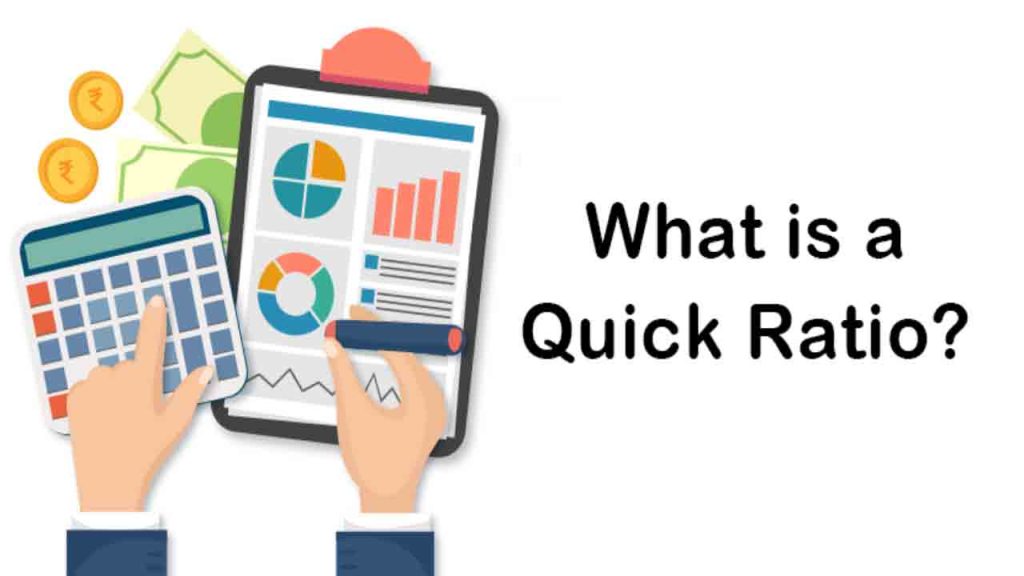Quick Ratio – Cash powers business activities and a shortage of it will drive a business bankrupt. Cash is used to cover urgent expenses like salary and pensions, supplier invoices, inventory purchases, and dividends. Shortage of cash, or illiquidity, may lead to a business’s bankruptcy, or failure to pay its expenses.
The quick ratio is used to find a firm’s short-term liquidity, or the capacity to generate cash to cover bills that are due over the next 90 days. The Acid-test ratio and the quick ratio are the same. It is described as quick assets divided by current liabilities.
Quick ratio formula

Quick Ratio = Quick Assets / Current Liabilities
What comes under Quick assets?
The total of a business’s cash, cash equivalents like certificates of deposit, savings accounts, Treasury bills maturing in 90 days, marketable securities like publicly listed stocks and bonds, commercial paper, and receivables. It excludes other current assets i.e inventory and prepaid like prepaid premiums, which cannot be converted into cash immediately.
What comes under Current Liabilities?
Current liabilities are the obligations that should be met in a year. They comprise long-term debt interest that will be paid in the next year. Salaries, taxes, interest, services, and insurance are some examples.
Ideal quick ratio
An Ideal quick ratio is supposed to be 1:1. A firm with a quick ratio lower than one would be unable to completely repay its current liabilities.
The quick ratio is almost identical to the current ratio( it includes inventory).
Ratios are indicators of efficiency for a company, but they do not provide an accurate description of the company’s fitness. If a company has a significant number of accounts receivable that is due for payment after a long period of time (say, 120 days) and important company expenditures and accounts payable that are overdue for immediate payment, the quick ratio may appear healthier even if the company is about to run out of money. In comparison, if the company has secured immediate payment or cash from consumers and long terms from vendors, it will get a quite low quick ratio while also being quite stable.
A more rigorous study of all major payables and receivables according to market sentiments and modifying input data appropriately would provide more reasonable results and implementable perspectives.



